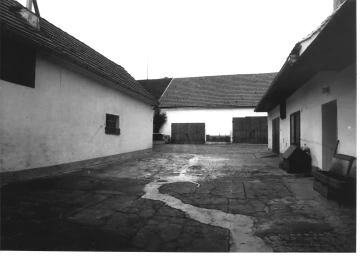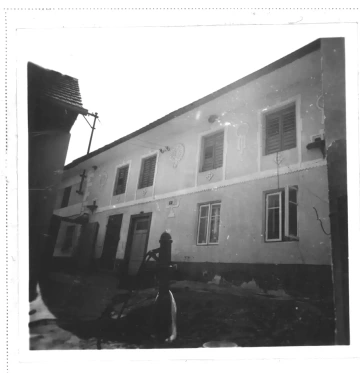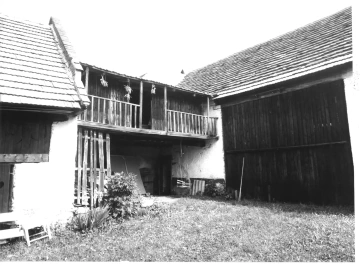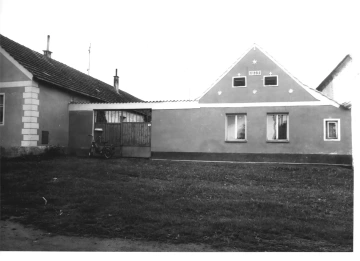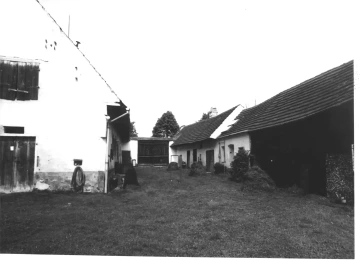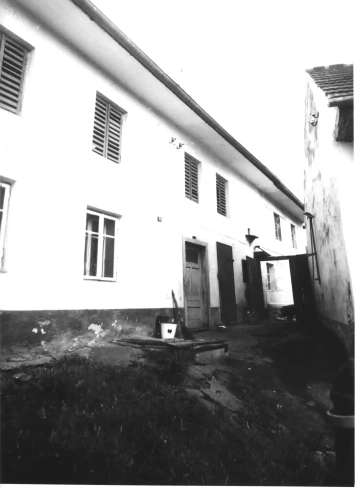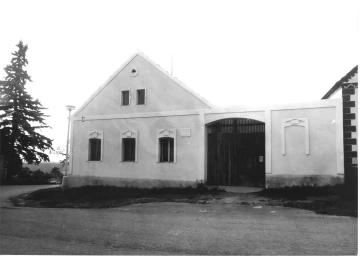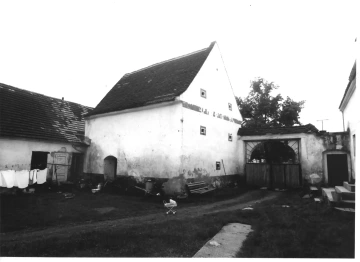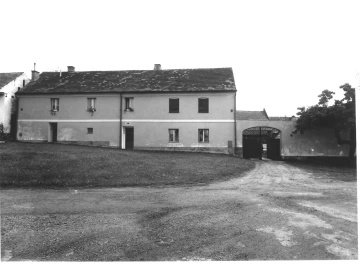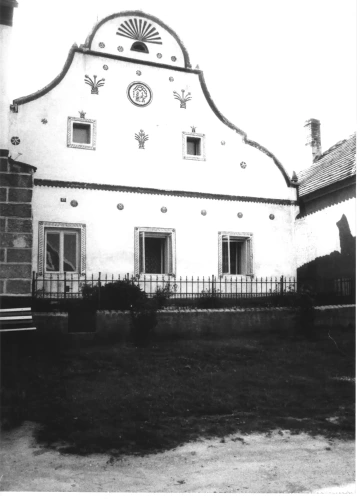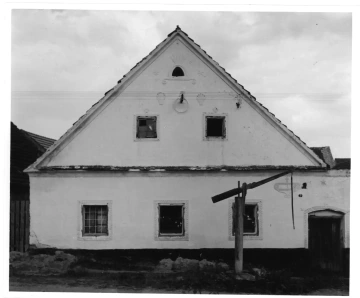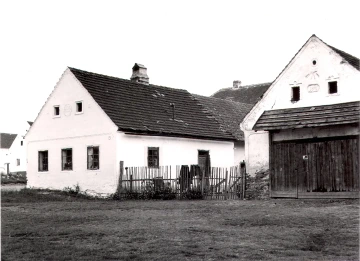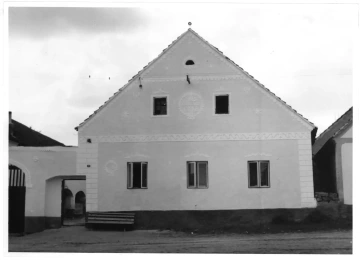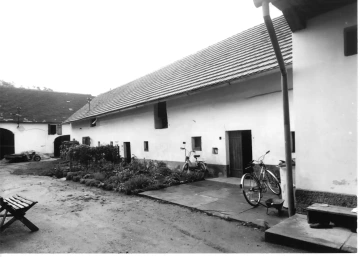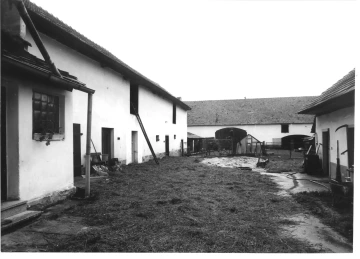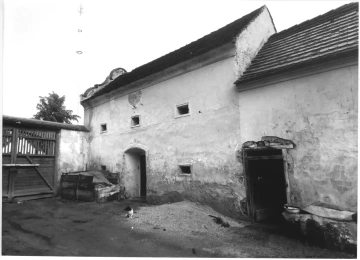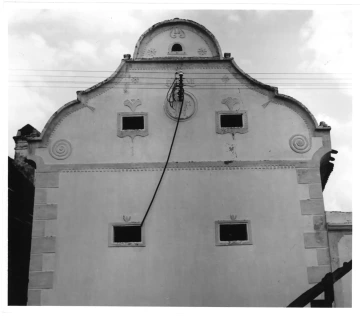History
How was Holasovice born?

Introduction to the history...
The historical development of the present village dates back to the Middle Ages, roughly to the middle of the 13th century. From the regular layout and arrangement of the individual buildings it can be concluded that they were founded on the so-called green field, i.e. without the use of an older settlement, and are the result of colonization efforts in the South Bohemian border region.
The first written references not only to Holašovice but also to the surrounding villages date back to the 2nd half of the 13th century, but the history of settlement in this area is much older. It dates back roughly to the younger Stone Age, the Neolithic period, i.e. about 7 thousand years ago. This assumption is confirmed by the discovery of a large Neolithic settlement located about 5 km from Holašovice in the vicinity of the Dehtář pond. Fragments of vessels and various chipped stone tools were found on an area of 4 ha. This is evidence of the first permanent settlement in this part of southern Bohemia. The discovery of a large number of bronze objects in the immediate vicinity of Holašovice dates back to the Younger Bronze Age (ca. 1000-1200 BC). Bronze objects, sickles, spearheads, knives and bracelets are now part of the collections of the South Bohemian Museum in České Budějovice. Celtic settlements have been recorded in the vicinity of Čakov and Zbudov. With the arrival of the Slavs, Netolice became the centre of the area, which at the turn of the 11th and 12th centuries administered relatively large territories with a low population density. However, this gradually changed into a network of permanently inhabited villages and settlements whose inhabitants were engaged in agriculture.
Holašovice, as already mentioned, was founded in the middle of the 13th century, and its layout makes it clear that it is the result of a planned effort to colonise the borderland. The settlement development shows remarkable stability - the historical number and location of the homesteads has remained virtually unchanged to this day. Some expansion of the built-up area occurred during the 20th century, but these buildings and the agricultural area are situated on the north-eastern and southern edges, outside the compact medieval core.
Compare the history and present of the farmhouse No. 22

The name of the village suggests that the people of a certain Holas or Holaš, who may have been a member of the wider royal retinue or lower nobility, settled there. The first written mention appears in 1292 in the charter of King Wenceslas II. The latter granted the descendants of Slavomir of Nemcice the return of some lands that were at that time in the possession of the Vyšebrod monastery. As compensation, the monastery then received part of the royal property southeast of Netolice; namely the villages of Strýčice, Vodice, Záboří, Všemily (now a defunct village), Dobčice, Lipanovice and Holašovice. These villages remained part of the monastery property until 1848 and despite the considerable distance, these places were economically and spiritually linked.
Only a few sources from the late Middle Ages, i.e. from the 15th and 16th centuries, have survived, but it can be assumed that as part of the monastery property, Holašovice also faced Hussite armies, especially during Žižek's campaign to Prachatice.
At this time, the farmers paid part of their salaries to the Cesky Krumlov castle (even though they were not part of this estate) - this was part of the so-called jiter land, which was a measure of the area that could be ploughed by a pair of oxen in one day. The so-called "Krumlov land register" (1510), which records the first names of the Holašovice farmers, also dates from this period. This document shows that at that time the population of Holašovice was predominantly of Czech nationality.
However, this changed after the plague epidemic that struck the whole of southern Bohemia between 1520 and 1521, and Holašovice was not spared. According to a legend passed down from generation to generation, only two people survived the tragedy and left the village empty. Holašovice was then repopulated by the subjects of the Vyšebrod monastery, this time mostly of German origin. A document from this period - the Vyšebrod town planner - documents not only the predominantly German-speaking population, but also the end of the basic urban development of the village. Thanks to this document, we know that in 1530 there were already 17 farmsteads around the village square and this number has not changed to this day.
The period of the Thirty Years' War meant that Holašovice was in constant danger from both the Estates' Revolt and the imperial garrison due to its location in relation to Ceske Budejovice. In addition to these hardships, the Thirty Years' War brought the inhabitants of Holašovice one very important privilege - exemption from death for the entire Zaborsky rychty, which in practice meant that local farmers could freely dispose of their movable and immovable property before their death.
From the middle of the 17th century onwards, written sources began to appear, which was connected with the effort to keep accurate records of the serfs. New land registers were created, which trace the demographic development of the village in detail and, thanks to the inventories of property, give us an idea of the present-day value of the land and its furnishings.
Porovnejte historii a současnost
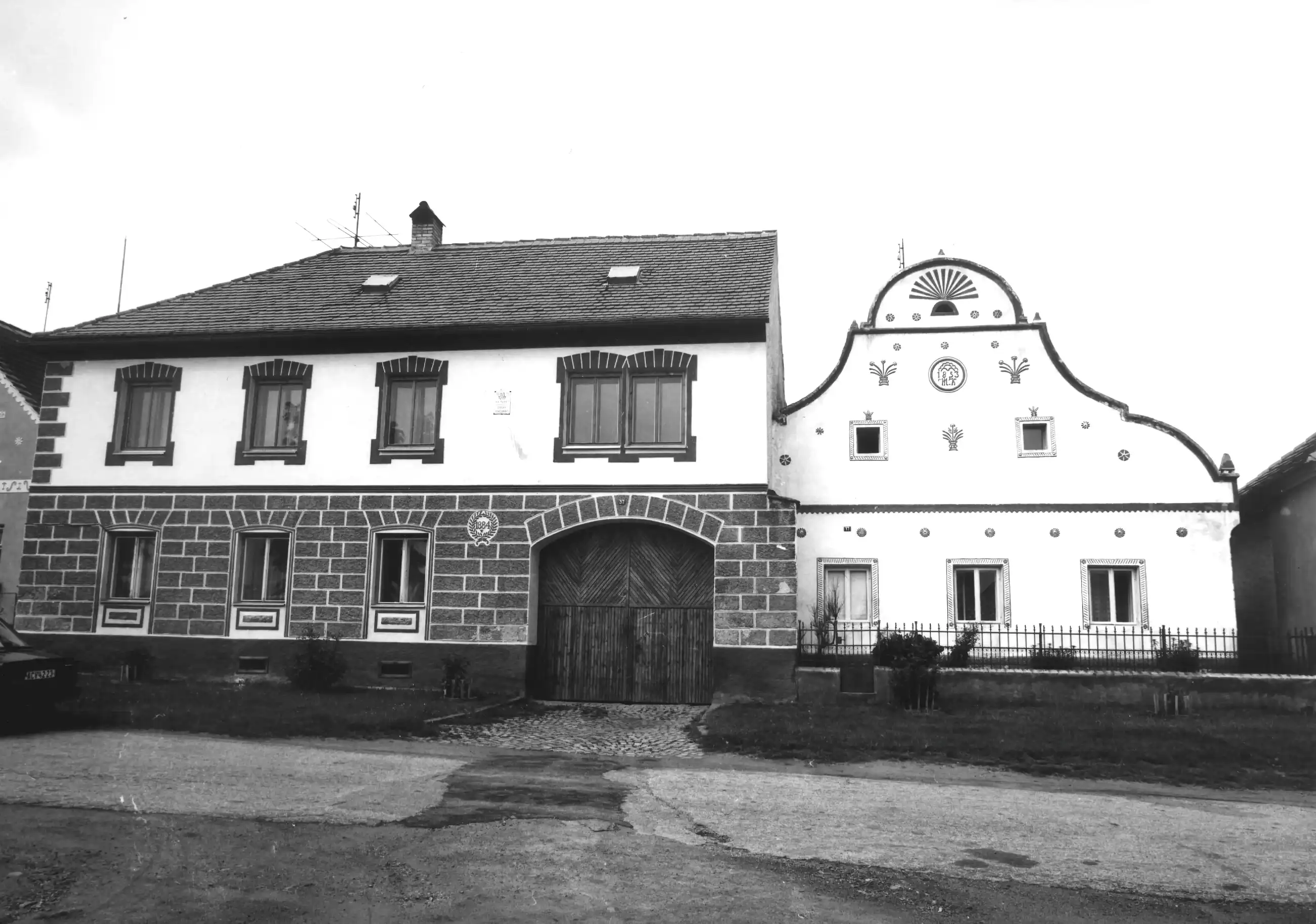
In the 18th century, on the basis of Maria Theresa's patent of 1770, the estates were marked with descriptive numbers, and despite the fact that 22 numbers were recorded in the cadastre at that time, there were still 17 grounds.
Fundamental changes in the life of the local inhabitants occurred in the mid-19th century - in 1847 serfdom was abolished and the foundations for the establishment of territorial and municipal self-government were laid with the adoption of a provisional law. Municipalities became the basic building unit of the state. Dependence on the administration of the chiefdom was replaced by incorporation into the respective regional government. Demographically, the majority of the population is still of German nationality.
The Second World War had a significant impact on the lives of the local population. With the signing of the Munich Agreement, the border of the German Reich was pushed far inland, beyond the borders of the Zábora cadastre, and Holašovice and other villages became part of the Reich's territory. This resulted in the forced departure of the Czech inhabitants, which affected a total of three Holašovice families. However, the situation turned around and after the war, in 1946, the forced removal of the Germans began, affecting the vast majority of the inhabitants from a total of 12 homesteads. The settlement of Czechs from the surrounding villages was gradual, and in 1950 there were still a quarter less inhabitants than before the war, in 1930.
After the liberation in 1945, the Revolutionary National Committee was established. Holašovice was not an independent municipality. Between 1850 and 1945 it was a settlement of the municipality of Záboří. In 1951 they were an independent municipality for a while, but before the end of the year they merged with Záboří again. Since 1964 Holašovice, Čakov, Čakovec and Holubovská Bašta belonged to the merged local national committee in Jankov. Nowadays, they are cadastrally and officially under the municipality of Jankov.

Spiritual life
From the end of the 13th century the inhabitants belonged to the Roman Catholic parish of Stryčice and to the monastery in Vyšší Brod. From 1784 Holašovice was part of the parish of Čakov together with Čakov, Jankov and Holubovská Bašta. However, the parish priest in Strýčice did not want to give up his rights to the inhabitants of Holašovice, and especially the fees from them. These disputes between the two parishes lasted until the middle of the 19th century. The annexation to the parish of Čakovice resulted in another problem - all the Holašovice believers were of German nationality and therefore demanded to celebrate mass in German as they were used to in the church in Strýčice. But this met with resistance from the purely Czech population of Čakov and Jankov. From 1788 onwards, the parish priest preached every third Sunday in German and the other days in Czech.
German sermons were a subject of discussion during the Czech-German national disputes at the end of the 19th century and especially after the establishment of the Czechoslovak Republic. In December 1918, the German sermons for the parishioners of Holašovice were officially abolished and all services were held only in Czech.



